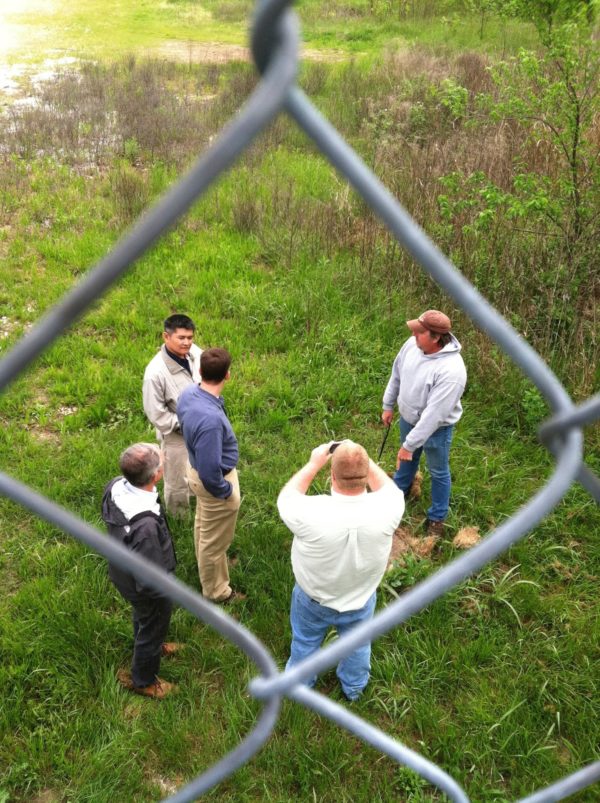Operator Certification: Virtual Training Is Here to Stay!
As we reflect on the effects of the COVID-19 pandemic, nearly every aspect of our lives is being impacted in some way. Some of these changes will be permanent, others may turn out to be temporary disruptions. However, everyone is still working toward the same goals. Like running a steeplechase, the goal is not to remove the hurdles, the focus is on clearing those hurdles and charging ahead to reach the finish line.
For all of the water and wastewater system operators out there, the main goal of your jobs has remained the same: provide an adequate and safe supply of water for your community and safely dispose of wastewater. Safe water for cleaning and washing is a main line of defense against this new virus. Essentially, you are there to protect the health of the citizens. You are certified by a state agency to perform those duties and with that certification comes the responsibility/requirement to continue to improve your skills and ability through training.
COVID-19 has presented additional hurdles in the training process such as fewer available continuing education hours, personal protective equipment recommendations, local ordinances, social distancing, smaller group numbers, travel restrictions, limited access to some venues, essential only workers, quarantine guidelines, and budget cuts. Over the last two years, many gatherings, conferences, classes, and training events, have been canceled either due to direct health department orders or broader general health, safety concerns, and restrictions. This affects not only operators but also the individuals who present the training classes. Everyone in the chain needs continuing education to stay current. How does this get done safely and effectively?
Virtual training has rapidly gained popularity. It is both convenient and effective. States across the US are finding ways to ensure water and wastewater operators stay up-to-date and certified in our current social distancing environment. Virtual training has always had a presence but now there is the realization we are able to do it effectively and there is great potential in its use. Online trainings may be the solution for cutting down on travel costs and allow the operator to ‘mind the shop’ while slipping in a 2-hour training right from their desk. Additional presenters or co-hosts can be brought in on a training from almost anywhere in the world. Many online software applications allow multiple ways for trainees and trainers to communicate such as chat functions, interactive feedback through polls and surveys, and break out rooms for discussion. An operator may be able to find a larger variety of courses available and curriculum can be saved and reviewed following the event.
Attendees need to have access to suitable equipment for virtual training. Essentially all online training presentations will state the requirement for the attendee to have the following:
- Internet: Reliable internet access of sufficient bandwidth (Speed). There are quick online tools to conduct a speed test to ensure your internet connection is performing well. If you are experiencing interference using a wireless router (Wi-Fi), you may consider an ethernet connection (wired), especially if the computer is used in the same place all the time.
- Computer: A reasonably recent model computer with enough available memory (RAM), an up-to-date operating system (i.e. Windows, iOS, Android), a browser (i.e. Chrome, Microsoft Edge, Firefox), a quality screen (Monitor), and of course the keyboard/mouse or touch screen to interact with.
- Audio: A headset with a microphone is preferred, and will generally be required to enable two-way communication. The computer’s built-in speaker and microphone system (if available) will work well if the attendee can locate a quiet location. Identify at least one backup connection to the audio of the event, usually a phone call-in option. Video of the attendee could be required for attendance verification but is generally not necessary.
- Software Application: Some courses may also require downloading a specific software application (app) or a browser plug-in specific to the presentation method, and these will generally be available free of charge for attendees.
- 5. Try it out & Practice: Prior to the event, take time to make a test run of all of the above components. All of them. Connect early to the session. Attend a trial class or practice session within your organization. Practice manipulating the computer controls, window locations/sizes, try adjusting the volume levels of both speaker and microphone. Attempt reconnecting to the event login page after an unexpected interruption. Test the phone call-in option. Make sure your phone is available and either plugged in or fully charged. Testing the system and connection PRIOR to the live event will greatly reduce the technical issues that may occur.
For any virtual training to be effective, it must be easily interactive. The tools must become very familiar to the attendee (i.e. computer/internet/audio/video). We use pencils and notebooks our entire lives and learned early to raise our hand and ask questions. In an interactive classroom setting, trainers assume the attendees are proficient in those skills, and a simple invitation for the students to ‘feel free to interrupt if you have a question!’ opens the door to positive interaction in that classroom. Someone raises a hand, or someone speaks out “Excuse me, what about …?” Then a dialog starts, between teacher and student, or between students. In the virtual learning environment, the goal is to replicate this type of exchange by allowing trainees to interact and ask questions of the trainer throughout the presentation.
Midwest Assistance Program, Inc. (MAP) has completed numerous virtual trainings for operators and clerks with positive feedback from attendees and trainers alike. MAP Training Coordinator Jim Jones believes, “this form of training will continue to grow and MAP will continue to provide online content in the years to come. TAP’s [Technical Assistance Providers] that have first been apprehensive about providing online training have later said that their trainings went well and they look forward to using the online content again to train others in the future.” MAP trainings are often offered at no cost and are updated regularly on the website: www.map-inc.org under “Training.”
There are some tall hurdles on our track and it looks like they will be with us for a while, therefore we must practice. All of us. The software and hardware tools used by trainers and trainees alike are continually under development, being revised and updated. So, log on and begin training!



